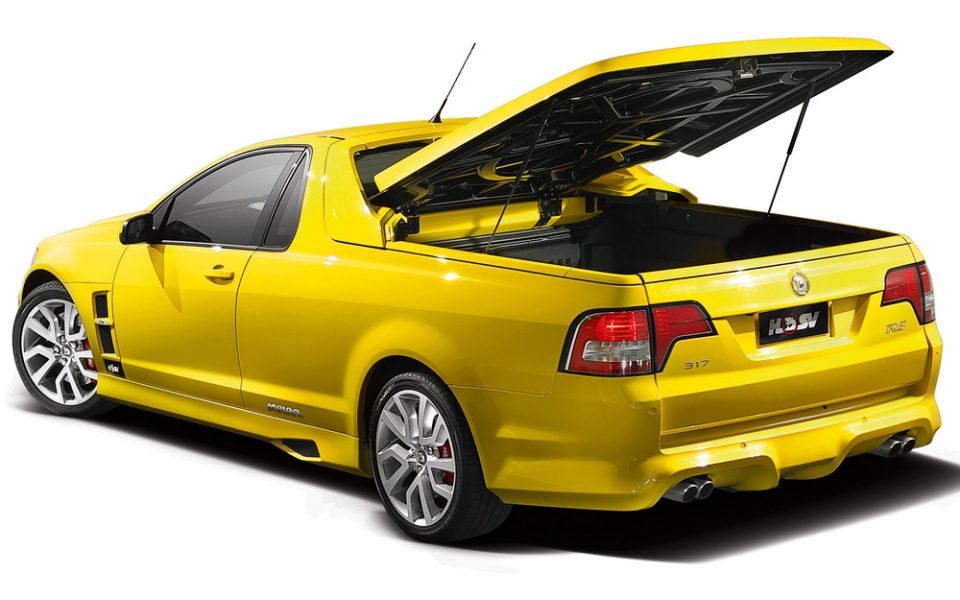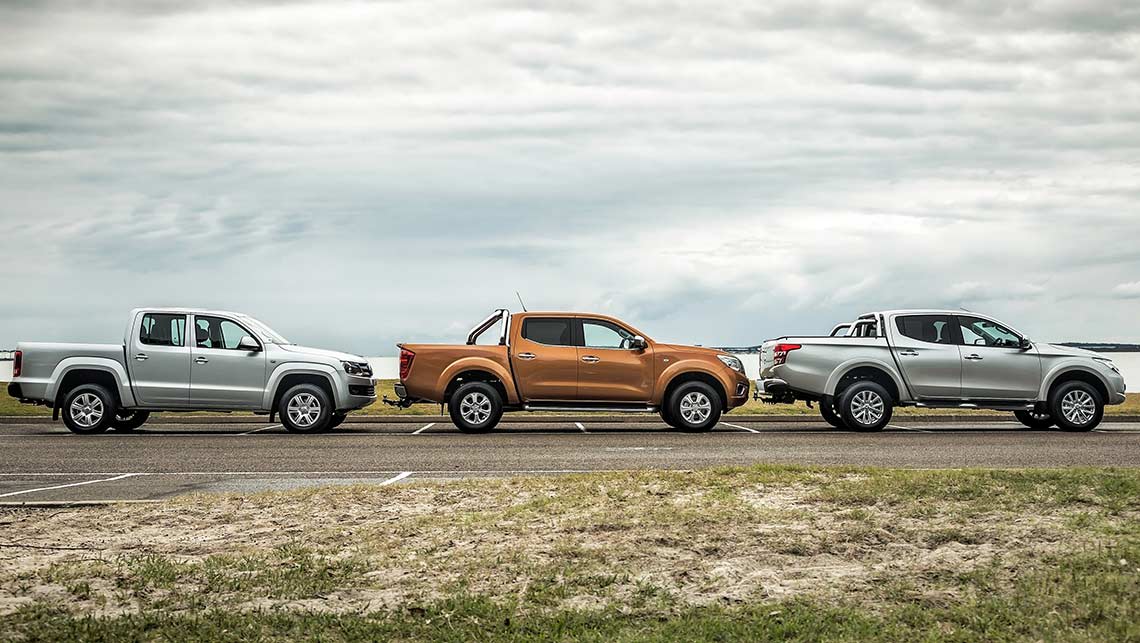
Utes are the most versatile cars on the road, but are they worth buying?

You might argue that there is nothing more Aussie on wheels than a Commodore or a Falcon - with the exception of Les Patterson devouring Steve Waugh on a bike - but none of them are as unique, innovative or downright lousy as ute: our gift to the world automotive
You've probably heard the story of the farmer's wife who wrote to Ford many dusty moons back in 1932 asking him to build a vehicle for her that could take pigs to market on a weekday, and she and her husband to church on weekday. Sunday.
In response, engineer Lewis Bandt designed Ford's first SUV, which would go on to spawn a style of car that carried everyone from workers to HSV Maloo-loving hooligans.
Are we cheated by streams of Yankee-style movers?
We wrote songs about them, held gatherings for them and did club work in them, but, like in many other parts of Australia, a real yut is meant to be a page in history, next to Slim Dusty and people who actually say "Honest Dinkum ".
This does not seem to bother car buyers as one in five new cars sold in Australia today are still Utes, the vast majority of which are ladder frame import offerings such as the hugely popular Toyota HiLux, VW. Amarok and attractive locally built Ford Ranger.
So our modern ute is more like a pickup truck, but aren't we being deprived of a flood of Yankee-style loggers?
Good
The way they are put together may change - or evolve - but what the utes can do hasn't changed a bit. They are still the best way to transport anything big, heavy, or clunky - like Clive Palmer - short of a dedicated light truck or van.
The back of a car can carry all kinds of nasty stuff, and no stench gets into the cabin. After the job is done, it is easy to wash the pallet out of the hose and proceed to the next job.
In some cases, cleaning the interior is almost as easy. Basic versions can be supplied with vinyl floors and hard-wearing seats, befitting their everyday tool status.
If, however, you want the car to do double duty, as in the original assignment, modern utes may fit the bill well.
The cliff used to be a pretty spartan affair, but these days the interiors of the best cliffs are quite up to par with passenger cars.
Modern cars are brimming with safety, toys and accessories that can rival luxury cars, but the quality of interior plastics and seat trim is still a generation behind.
The next generation will also bring several new players eager to enter the growing ute game. It won't be long before you can drive a Renault or even a Mercedes Ute with ownership of the golf club's car park. At least enough space for your clubs.
Poorly
Criticizing a ute for not driving like a car is like criticizing a donkey for not being a horse; even so, it would be unwise to overlook the most pressing pitfall of ute ownership.
While car utes have the same level of technology as passenger cars, the rest of the field is about as advanced as the Amish. Consider HiLux, Ranger or Amarok; hardy and adventurous as they are, they use chassis technology that became obsolete in the 1960s.
The body-on-frame setup, which passenger cars left behind when the Beatles still had short hair, is the easiest and therefore cheapest way to build a chassis.
Think about your middle staircase. Now make one of the beams, lay it flat, screw the wheels to the corners and stick the passenger compartment on top. What you have created is the base chassis that runs under every imported car in the country.
The production of frame reinforcement is extremely cheap compared to unitary or load-bearing bodies. The stinginess doesn't stop at the chassis either; manufacturers are just as stingy when it comes to suspension.
Leaf springs, which are about as old as Les Patterson, are also incredibly cheap to manufacture and fit into a ladder chassis. Leaf springs also eliminate the need for trailing arms and other complex suspension components required in coil-based setups, keeping production costs as low as possible. However, leaf springs are still the best way to suspend a heavy load, as they spread the weight along the chassis rail rather than concentrating it on the surface of the top of the coil spring.
They are still the best way to carry something big, heavy or clumsy - like Clive Palmer.
The bottom line of cheap old world technology really starts to show when you get behind the wheel and hit a pothole.
Since the rear end is suspended on leaf springs, it can feel fickle and unbridled - because it is. The oversimplified suspension does a poor job of steering the rear wheels, especially under load, causing all sorts of nasty bouncing, maneuvering or jumping down the road.
Things get a lot worse in inclement weather, as a wayward back end becomes a chore or even a nightmare on the ice. Modern traction and stability control systems, mandatory from November 1 this year, can return control, but they hide serious technical shortcomings.
This misbehavior has an unlikely remedy; ask anyone in a blue jersey and they'll tell you that their bike has the best handling - and the best grip - with a couple of hay bales or Clive Palmer in the back. That's because the weight counteracts the hectic action of the leaf springs, allowing the rear end to behave with a modicum of civility. However, with a few hundred extra pounds, don't expect decent fuel figures.
It's important to note that Nissan is actually bucking this trend with its new Navara with coil-spring rear suspension. It's an outstanding car in that respect, but praising a 2015 model year car for its versatile coil springs is like praising a teenager for being a master at using a fork and knife.
Just as seaweed replaced the cabbage-filled chico roll in sushi, the majority of Australians have moved away from Australian products.
With such a fatal flaw, at least to most Ute, other matters of ownership seem insignificant in comparison. And, in fact, that's the way it is - when you buy an ute, you're agreeing that your friends, colleagues, and complete strangers will want you to help them move, bring items from Bunnings, or go for tips.
At the very least, crash safety is no longer a concern, with most manufacturers' cars receiving a five-star ANCAP safety rating. If, on the contrary, you value dollars more than kneecaps, there is always Great Wall, Foton or Mahindra.
Are they being tested?
Starting next year, the car that spawned this entire segment - the Ford Falcon ute - will be dead, and the future of the Commodore ute is more than bleak. Most industry experts say that it will also cease to exist in the next 18 months.
With the death of the real car, the future looks bleak. The body-on-frame uses unparalleled Great Gatsby technology and seems to get bigger and clunkier with each succeeding generation. They're packed with more toys and come with prettier interiors, but the real car-based panache is gone.
Glimpses of hope for the future do exist, such as Mercedes-level interiors and coil-spring rears, but not enough to address their inherent shortcomings.
But just as seaweed replaced cabbage-filled chico rolls in sushi, the bulk of Aussies have moved away from the cliffside Aussies to those with more international appeal.
For better or worse, we voted with our wallets and imports will remain.
Related articles:
Why SUVs are becoming so popular
Why sedans are still the most popular car body style
Why a hatchback is the smartest car you can buy
Why a station wagon should be considered instead of an SUV
Is it worth buying a mobile engine?
Why people buy coupes even if they're not perfect
Why should I buy a convertible?
Why buy a commercial vehicle
